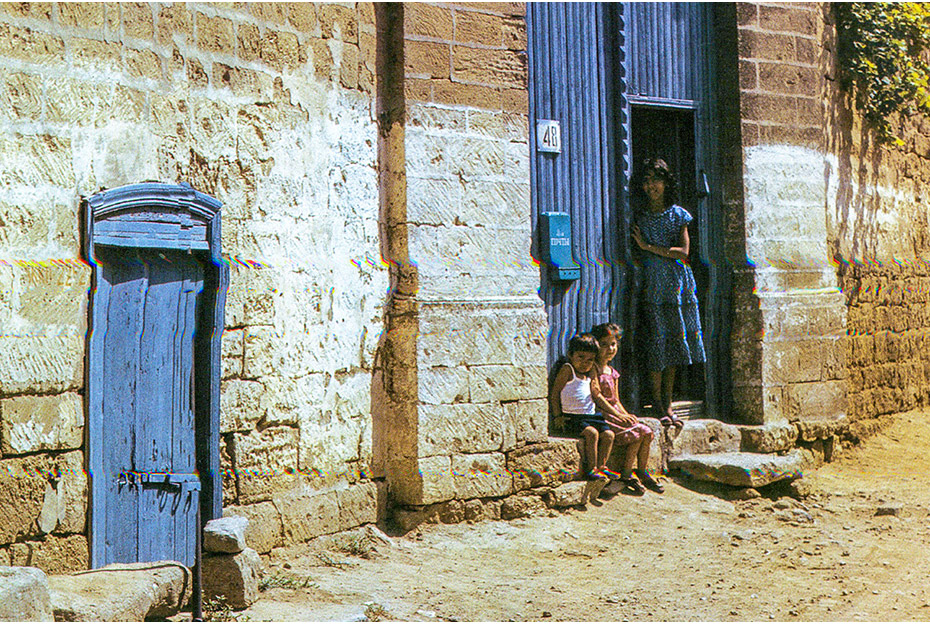Azerbaijan is one of the oldest areas of human habitation, where people once lived in natural geological formations. In its territory, archaeologists have discovered caves where people lived as far back as the Paleolithic era. For centuries, architects accumulated knowledge and skills related to rational planning schemes and the constructional and compositional methods of building residential houses in the area. However, data on the development of residential houses in Azerbaijan have been available only since the eighteenth century. Although we have little evidence of the development of the residential house in Azerbaijan in earlier periods, there is little doubt that the houses of the eighteenth and nineteenth centuries that have survived to the present time contain many features developed earlier.
Azerbaijan features nine out of eleven of the world’s climatic zones. The diversity of geographical and climatic conditions of different historical and cultural areas of Azerbaijan—as well as the variety of local construction materials available—has determined the development of residential architecture, with its wide range of forms and planning schemes based on local features. Residential houses were usually built of various kinds of stone, baked and raw clay bricks, different types of wood, and different varieties of plaster, such as clay, lime, and gyaj (alabaster).
Long, hot summers, strong winds, a lack of timber, an abundance of high-quality limestone, and rich clay influenced the constructive and artistic features of houses built on the Apsheron Peninsula. The architecture of traditional Apsheron houses built of stone is austere and laconic. They were covered with domes and vaults. They had no balconies. An interesting feature of their planning was a specially designed niche with a water outlet (su-akhan), which was used for bathing. Only in the nineteenth century did formal ceremonial houses begin to appear on the peninsula.
The houses of the northeastern part of Azerbaijan (Guba-Gusar District) are rectangular and consist of living premises grouped around the eiwan (lodge). In such houses, the facade features a balcony facing the street. In the Sheki District, the eiwan was also a favorite and almost obligatory element of a residential house. Such houses exhibit high, sloped roofs. In the houses of wealthy people, the walls and ceilings were partially and often completely covered with murals and different kinds of ornament on the gyaj background. The development of the residential house in Sheki can be exemplified by the so-called Khan’s Palace, a masterpiece of eighteenth-century folk architecture.
In Zakatala-Balakan in north-west Azerbaijan, one of the most important features came from the need to protect a house from frequent assaults. This resulted in the fortress-like shape of some houses. In this area, walls were built of broken stone or large pebbles and held together with lime-alabaster and clay mortar.
Most houses in mountainous Karabagh have two floors. Residential parts, lodges, and balconies usually face the inner courtyard. The facades of the Shusha residential buildings are adorned with huge artistic stained-glass windows (shebeke). Their interior is richly decorated with frescoes and different ornamentation. Architecturally delicate houses from Shusha look especially picturesque against the background of the Karabagh Mountains.
Ganja, the main town of Arran, is also rich with residential architecture. Here, the most interesting are the domed houses built in the seventeenth and eighteenth centuries, where square premises are covered with conical broach domes and the rectangular premises with vaults. The interior of the baked-brick houses is artistically decorated with a painted cupola and the frieze under it as the focal point.
In the seventeenth and eighteenth centuries, in Nakhichevan and Ordubad, a new type of semi- urban house was developed. The key constructive element of such houses is the distributing vestibule, often hexagonal or octagonal in projection. From this area, one could access other parts of the house, which usually featured two floors and was made of raw clay brick. Small inner courtyards usually had fruit trees, a vineyard, and flowers. Lavish green plants, a spring, and a small pool created the necessary cool atmosphere in the midst of a hot summer. In the houses of Ordubad, particular attention was paid to the artistic decoration of the brick portal, with the front door in the facade facing the street.
The residential houses of the southeastern part of Azerbaijan (Lenkaran) are also interesting. In this region, there are one- and two-floor houses that, apart from the eiwan, have another area, the lyam, used by the family and visitors during the summer.
Traditional residential houses form a considerable part of the rich architectural heritage of Azerbaijan and brilliantly reflect the artistic potential of the architects of past generations.







